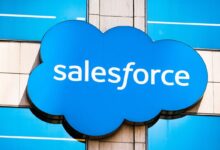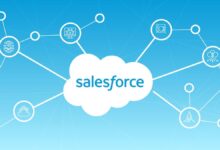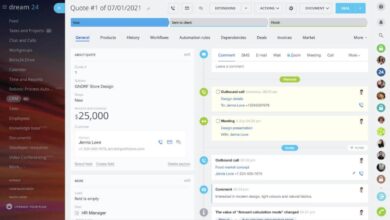Salesforce CRM Pricing: 7 Shocking Truths You Must Know in 2025
Thinking about Salesforce CRM pricing? You’re not alone. With its powerful tools and global reputation, Salesforce dominates the CRM market—but the cost can be a major hurdle. Let’s break down exactly what you’re paying for, how plans differ, and whether it’s worth every penny.
Salesforce CRM Pricing Overview: What You Need to Know First

Salesforce CRM pricing is notoriously complex. Unlike simple flat-rate software, Salesforce offers a tiered, modular pricing model that scales with your business needs. This flexibility is powerful—but it also means costs can spiral if not managed carefully.
How Salesforce Structures Its Pricing Model
Salesforce doesn’t sell one CRM product. Instead, it offers a suite of cloud-based solutions—Sales Cloud, Service Cloud, Marketing Cloud, and more—each with its own pricing structure. Most plans are billed per user per month, with annual contracts required.
- Per-user, per-month pricing: The standard model across most Salesforce editions.
- Annual commitment: Month-to-month options are rare; most plans require a 12-month contract.
- Minimum user requirements: Some editions require a minimum of 5 or more users.
For example, the Sales Cloud Essentials plan starts at $25/user/month, but only if billed annually. Month-to-month would cost more, and availability may vary.
The Role of Editions in Salesforce CRM Pricing
Salesforce divides its offerings into “editions”—Essentials, Professional, Enterprise, and Unlimited. Each edition unlocks more features and customization, but at a steep price jump.
- Essentials: Entry-level, limited customization, ideal for small teams.
- Professional: Adds workflow automation and API access.
- Enterprise: Full customization, advanced analytics, and support.
- Unlimited: Premium features, 24/7 support, and dedicated account team.
“Salesforce’s pricing isn’t just about cost—it’s about capability. The higher the edition, the more control you have over your CRM environment.” — CRM Analyst, Gartner
Salesforce CRM Pricing by Edition: Breaking Down the Costs
To truly understand Salesforce CRM pricing, you need to compare the editions side by side. Each step up brings new tools, but also a significant price increase. Let’s explore what each tier offers and how much it really costs.
Salesforce Essentials: The Entry-Level Option
Salesforce Essentials is designed for small businesses with up to 10 users. It’s the most affordable entry point into the Salesforce ecosystem, starting at $25 per user per month when billed annually.
- Limited to 10 users.
- Basic contact and lead management.
- Mobile app included.
- Email and phone support only.
While it’s budget-friendly, Essentials lacks automation, advanced reporting, and API access—features many growing businesses eventually need. For more details, visit the official Salesforce pricing page.
Salesforce CRM pricing – Salesforce CRM pricing menjadi aspek penting yang dibahas di sini.
Professional Edition: The Sweet Spot for Growing Teams
Priced at $80 per user per month, Salesforce Professional is often seen as the “sweet spot” for mid-sized businesses. It includes workflow automation, approval processes, and API access—critical for integrating with other tools.
- Customizable page layouts and dashboards.
- Advanced assignment rules for leads and cases.
- Support for third-party app integrations via AppExchange.
- Email, phone, and online support.
However, Professional still has limits on customization. You can’t create custom objects or use sandbox environments, which restricts developers and IT teams.
Enterprise and Unlimited Editions: For Large-Scale Operations
Enterprise ($165/user/month) and Unlimited ($330/user/month) are built for large organizations that need deep customization and robust support.
- Enterprise: Full API access, custom objects, sandboxes, and single sign-on (SSO).
- Unlimited: All Enterprise features plus 24/7 priority support, additional storage, and a dedicated account executive.
These editions are ideal for enterprises with complex sales cycles, global teams, or compliance requirements. But the cost adds up fast—a 100-user Unlimited deployment can exceed $396,000 per year.
Sales Cloud vs. Service Cloud: How Different Clouds Affect Pricing
Salesforce CRM pricing isn’t just about editions—it also depends on which “cloud” you choose. The two most popular are Sales Cloud and Service Cloud, each tailored to different business functions.
Sales Cloud Pricing: Driving Revenue with Automation
Sales Cloud is the flagship product for managing leads, opportunities, and sales pipelines. Its pricing aligns with the standard editions: Essentials ($25), Professional ($80), Enterprise ($165), and Unlimited ($330).
- Lead and contact management.
- Sales forecasting and pipeline tracking.
- AI-powered insights via Einstein Analytics (Enterprise+).
- Mobile access and offline sync.
For sales teams, the Professional edition is often the minimum viable option. Essentials lacks workflow automation, which limits scalability. Learn more at Sales Cloud Pricing.
Service Cloud Pricing: Support That Scales
Service Cloud focuses on customer service and support. It includes case management, knowledge bases, and omnichannel routing (chat, email, phone).
Salesforce CRM pricing – Salesforce CRM pricing menjadi aspek penting yang dibahas di sini.
- Starts at $75/user/month for the Digital edition.
- Professional edition at $100/user/month.
- Enterprise and Unlimited editions mirror Sales Cloud pricing.
Service Cloud also offers a “Digital” tier, which is more affordable but limited to digital channels—no phone support routing. This makes it ideal for digital-first support teams.
Bundling Sales and Service Cloud: Is It Worth It?
Many businesses use both Sales and Service Cloud. Salesforce offers bundled pricing, but it’s not always cheaper. You’ll typically pay the sum of both editions minus a small discount.
- Example: 10 users on Sales Professional ($80) + Service Professional ($100) = $1,800/month.
- Bundled deals may save 5–10%, but require negotiation.
- Custom quotes are common for large deployments.
For enterprises, bundling can simplify billing and improve integration, but it’s essential to compare against standalone pricing.
Hidden Costs in Salesforce CRM Pricing You Can’t Ignore
The listed price is just the beginning. Salesforce CRM pricing often includes hidden or indirect costs that can double your total investment. Be aware of these before committing.
Implementation and Onboarding Fees
Unlike off-the-shelf software, Salesforce usually requires professional setup. Implementation costs can range from $5,000 to $100,000+ depending on complexity.
- Data migration from legacy systems.
- Custom field and workflow setup.
- User training and change management.
Many companies hire Salesforce consultants or partners like Accenture or Deloitte, which charge $150–$300/hour. Even with a $80/user/month plan, your first-year cost could be 3–5x higher due to onboarding.
Add-Ons and Premium Features
Salesforce monetizes advanced features through add-ons. These can significantly increase your monthly bill.
- Einstein AI: Adds predictive analytics and automation. Starts at $50/user/month.
- CPQ (Configure, Price, Quote): For complex pricing models. Starts at $75/user/month.
- Marketing Cloud: Separate product, starts at $400/month for basic email campaigns.
- Storage overages: Additional data storage costs extra.
For example, adding Einstein Sales Analytics to an Enterprise plan increases the cost to $215/user/month—nearly 30% more.
Salesforce CRM pricing – Salesforce CRM pricing menjadi aspek penting yang dibahas di sini.
Renewal and Contract Escalation Clauses
Salesforce contracts often include annual price increases of 5–10%. These are rarely advertised upfront.
- Automatic renewal clauses lock you in.
- Price protection is only guaranteed for the initial term.
- Negotiation is possible, but requires leverage.
“We signed a 3-year deal at $165/user, but year 2 was 8% higher, and year 3 was another 7%. The total cost was 27% more than expected.” — IT Director, Mid-Sized Tech Firm
Marketing Cloud and Other Salesforce Products: Expanding the Ecosystem
Salesforce CRM pricing doesn’t stop at Sales and Service Cloud. The full ecosystem includes Marketing Cloud, Commerce Cloud, Pardot, and more—each with its own pricing model.
Marketing Cloud: The High-Cost Powerhouse
Marketing Cloud is one of Salesforce’s most expensive products, designed for enterprise-level digital marketing.
- No public pricing—requires a custom quote.
- Minimum investment often starts at $10,000/month.
- Pricing based on contacts, channels (email, SMS, social), and features.
It includes Journey Builder, Email Studio, and Social Studio, making it powerful but complex. Small businesses rarely use it due to cost and learning curve.
Pardot: B2B Marketing Automation at a Lower Cost
Pardot is Salesforce’s B2B marketing automation tool, more affordable than Marketing Cloud.
- Starts at $1,250/month for up to 10,000 contacts.
- Grows with contact volume and features.
- Integrates seamlessly with Sales Cloud.
For companies focused on lead nurturing and ROI tracking, Pardot offers a more accessible entry point into marketing automation.
Commerce Cloud and MuleSoft: Enterprise-Grade Extensions
For businesses with e-commerce or integration needs, Salesforce offers Commerce Cloud and MuleSoft.
- Commerce Cloud: Custom pricing, often $50,000+/year.
- MuleSoft: API integration platform, starts at $5,000/month.
These are not for small businesses. They require significant technical resources and long implementation timelines.
Salesforce CRM pricing – Salesforce CRM pricing menjadi aspek penting yang dibahas di sini.
Free Trials, Discounts, and Alternatives to Salesforce CRM
Before committing, explore free options and cost-saving strategies. Salesforce isn’t the only player, and there are ways to reduce your investment.
How to Get a Free Salesforce Trial
Salesforce offers free trials for most of its products.
- 30-day trial for Sales Cloud, Service Cloud, and Pardot.
- No credit card required for basic trials.
- Full access to features and setup tools.
Visit Salesforce Free Trials to get started. Use this time to test workflows, import sample data, and evaluate fit.
Nonprofit and Startup Discounts
Salesforce offers significant discounts for eligible organizations.
- Nonprofits: Up to 80–90% off through the Power of Us Program.
- Startups: The Salesforce Startup Program offers discounted rates and free credits.
- Requires verification and annual renewal.
For example, a nonprofit can get Sales Cloud Enterprise for $26/user/month instead of $165—a massive savings.
Top Salesforce Alternatives with Lower Pricing
If Salesforce CRM pricing is too high, consider these alternatives:
- HubSpot CRM: Free core CRM, paid plans start at $45/month.
- Zoho CRM: Starts at $14/user/month, highly customizable.
- Pipedrive: $14.90/user/month, sales-focused and intuitive.
- Microsoft Dynamics 365: Competitive with Salesforce, starts at $65/user/month.
These tools may lack some of Salesforce’s depth, but they offer better affordability and faster setup.
Negotiating Salesforce CRM Pricing: Insider Tips to Save Money
Salesforce pricing is not set in stone. With the right strategy, you can negotiate significant savings.
Salesforce CRM pricing – Salesforce CRM pricing menjadi aspek penting yang dibahas di sini.
When and How to Negotiate Your Contract
The best time to negotiate is during the initial quote or renewal period.
- Ask for multi-year discounts (e.g., 15% off for 3 years).
- Request free training or implementation credits.
- Leverage competitor quotes as bargaining tools.
Salesforce reps have some flexibility, especially for deals over 50 users. Don’t accept the first offer.
Leveraging Salesforce Partners for Better Deals
Working with a Salesforce partner (like IBM, Capgemini, or a boutique consultant) can help you secure better terms.
- Partners often have volume discounts.
- They can bundle services and software.
- Some offer post-sale support at lower rates.
However, ensure the partner’s fees don’t erase the savings. Always compare total cost of ownership.
Avoiding Common Pricing Traps
Many companies overpay due to avoidable mistakes.
- Over-licensing: Don’t buy Unlimited for all users—use mixed editions.
- Ignoring usage: Monitor login rates; inactive users still cost money.
- Skipping the sandbox: Test changes in a sandbox to avoid costly errors.
Regular audits of user roles and feature usage can save 20–30% annually.
Is Salesforce CRM Worth the Price? A Final Verdict
After analyzing Salesforce CRM pricing in depth, the big question remains: Is it worth it?
Who Should Use Salesforce CRM?
Salesforce is ideal for:
Salesforce CRM pricing – Salesforce CRM pricing menjadi aspek penting yang dibahas di sini.
- Mid-sized to large businesses with complex sales or service operations.
- Companies planning long-term digital transformation.
- Organizations that need deep customization and integration.
If you have the budget and technical resources, Salesforce offers unmatched scalability and ecosystem support.
When to Consider a Cheaper Alternative
For small businesses, startups, or teams with simple needs, Salesforce may be overkill.
- If you only need contact management and basic pipelines, try HubSpot or Zoho.
- If your team is under 10 people, the minimum user requirements and setup costs may not justify the investment.
- If you lack IT support, the learning curve can slow adoption.
In these cases, a simpler, lower-cost CRM delivers better ROI.
The Long-Term Value of Investing in Salesforce
While the upfront cost is high, Salesforce can deliver significant long-term value.
- Improved sales productivity and forecasting accuracy.
- Better customer service and retention.
- Seamless integration with marketing, analytics, and e-commerce tools.
Companies that fully leverage Salesforce often see a 20–30% increase in sales efficiency within 12–18 months.
What is the starting price for Salesforce CRM?
The starting price for Salesforce CRM is $25 per user per month for the Sales Cloud Essentials edition, billed annually. This plan is designed for small businesses with up to 10 users and includes basic contact and lead management features.
What’s the difference between Salesforce Professional and Enterprise editions?
Salesforce CRM pricing – Salesforce CRM pricing menjadi aspek penting yang dibahas di sini.
Salesforce Professional costs $80/user/month and includes workflow automation and API access, but limited customization. Enterprise, at $165/user/month, offers full customization, sandboxes, SSO, and advanced analytics, making it suitable for larger organizations with complex needs.
Are there hidden costs in Salesforce CRM pricing?
Yes, common hidden costs include implementation fees ($5,000–$100,000+), add-ons like Einstein AI ($50+/user/month), and annual price increases of 5–10%. Data storage overages and third-party consultant fees also add to the total cost.
Can nonprofits get discounts on Salesforce?
Yes, eligible nonprofits can receive up to 80–90% off through the Power of Us Program. This includes discounted or free access to Sales Cloud, Service Cloud, and other core products, significantly reducing the total cost of ownership.
What are some affordable alternatives to Salesforce CRM?
Affordable alternatives include HubSpot CRM (free core version), Zoho CRM (starts at $14/user/month), Pipedrive ($14.90/user/month), and Microsoft Dynamics 365 ($65/user/month). These are ideal for small businesses or teams with simpler CRM needs.
Understanding Salesforce CRM pricing is crucial before making a decision. While it’s one of the most powerful CRM platforms available, its cost structure can be complex and misleading if not analyzed carefully. From edition tiers to hidden fees and negotiation strategies, every factor impacts your bottom line. For large, growing businesses, the investment can pay off in scalability and efficiency. But for smaller teams, simpler and more affordable alternatives may offer better value. Always test with a free trial, explore discounts, and calculate the total cost of ownership before committing.
Salesforce CRM pricing – Salesforce CRM pricing menjadi aspek penting yang dibahas di sini.
Further Reading:






